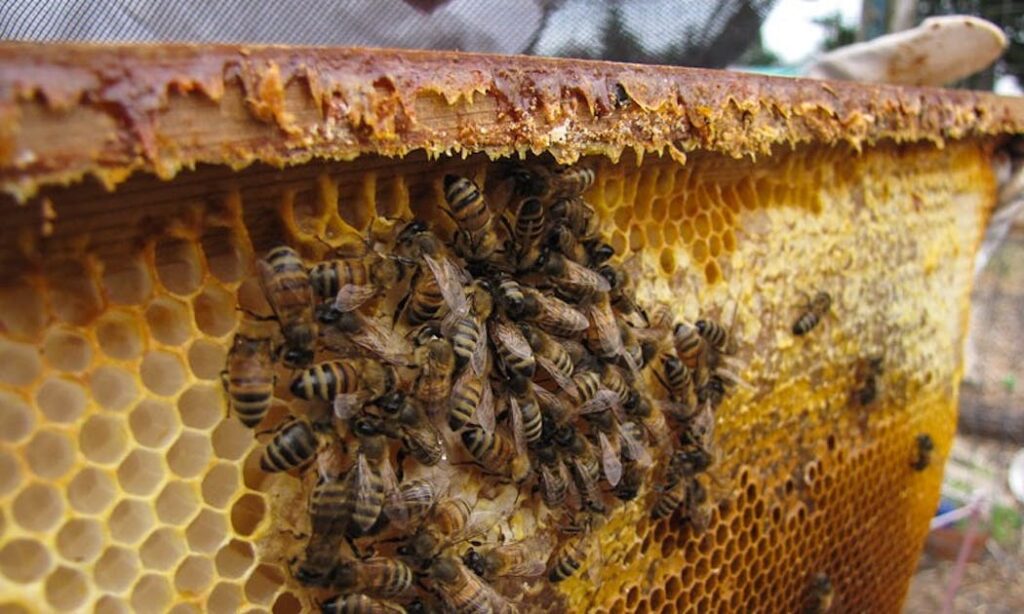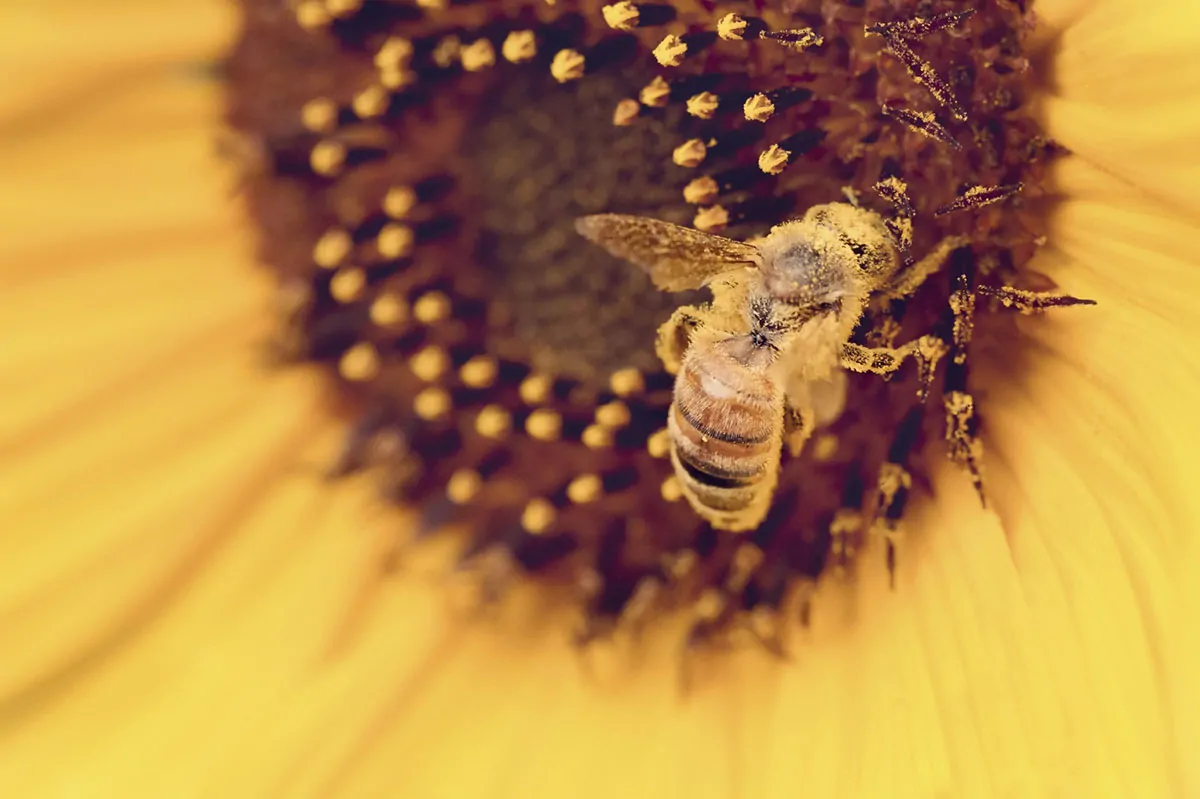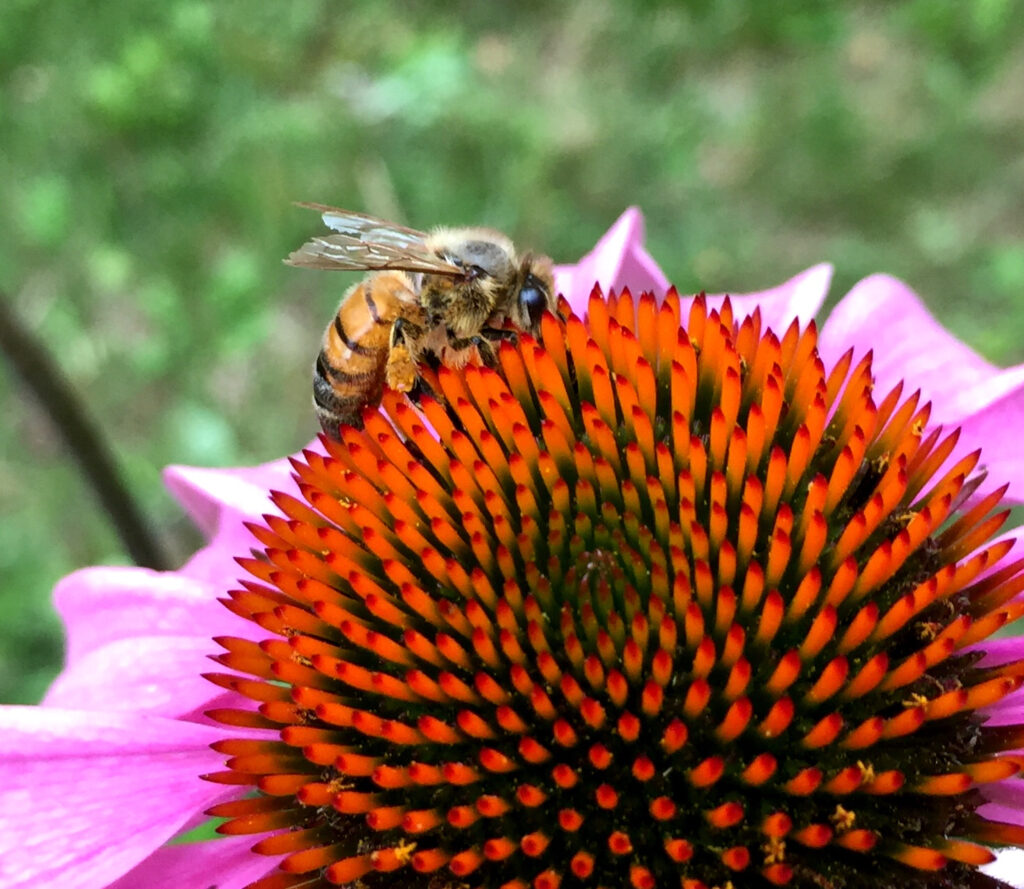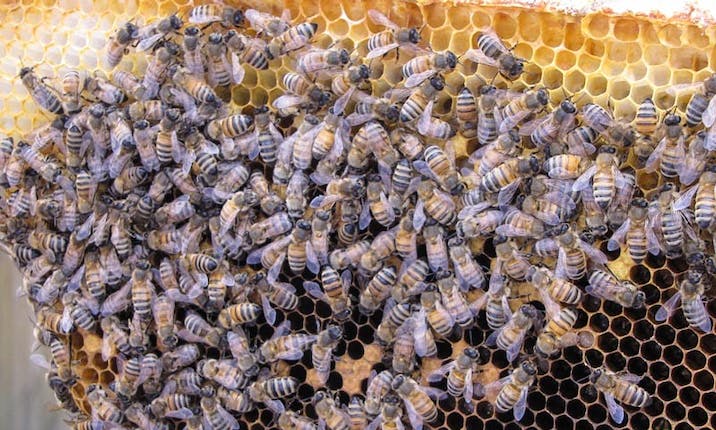
You have a deep fascination for bees and their crucial role in our ecosystem. You understand the importance of their pollination efforts and want to contribute to the well-being of these remarkable creatures. In this article, you will discover various ways to support and help your bees thrive, from creating a bee-friendly garden to providing essential resources for their survival. By adopting these simple practices, you can make a significant difference in the lives of these industrious pollinators.
Understanding Bees
bees play a crucial role in ecosystems. As pollinators, they transfer pollen from one flower to another, enabling plants to reproduce. This process is essential for the production of fruits, vegetables, and seeds. Without bees, many plants would struggle to survive, leading to a decline in food production and biodiversity. Additionally, bees contribute to the overall health of ecosystems by supporting the growth of wildflowers and other flowering plants. By understanding the importance of bees in ecosystems, we can better appreciate their role in our environment.
The life cycle of bees is a fascinating process. It consists of four distinct stages: the egg, larva, pupa, and adult. A queen bee lays eggs, which develop into larvae. The larvae are then fed by worker bees with a mixture of pollen and nectar. As the larvae grow, they transition into the pupal stage, where they undergo metamorphosis. Finally, fully formed adult bees emerge from their pupal cases. The life cycle of bees varies among different species, with some completing their life cycle within a few weeks, while others take several months. Understanding the life cycle of bees allows us to appreciate the incredible transformation and development these small creatures undergo.
There are various types of bees, each with its own distinct characteristics. The most well-known type of bee is the honeybee, which is typically kept by beekeepers for honey production. However, honeybees are just one of many types of bees. Bumblebees, for example, are larger and hairier, making them more efficient at pollination. Other types of bees include mason bees, leafcutter bees, and orchard bees, each with unique adaptations and roles within their respective ecosystems. By familiarizing ourselves with the different types of bees, we can gain a deeper understanding of their behavior and needs.
The role of the beekeeper is essential in creating a conducive environment for bees to thrive. Beekeepers not only manage hives but also help monitor and maintain the health of their bees. They play a crucial role in controlling diseases and pests, providing supplementary feeding when necessary, and supporting natural reproduction and swarming. Additionally, beekeepers often harvest honey, beeswax, and other bee products while ensuring the well-being of their colonies. By taking on the responsibilities of a beekeeper, individuals can actively contribute to the preservation and proliferation of these important pollinators.
Creating a Bee-Friendly Environment
Creating a bee-friendly environment starts with carefully choosing the right location for beehives. It is important to consider factors such as the availability of food sources, access to water, and protection from extreme weather conditions. Bees thrive in areas with an abundance of flowering plants, so selecting a location with diverse vegetation is crucial. Urban areas can also provide suitable environments for bees, as long as there are ample green spaces and access to water.
Providing adequate shelter and protection is vital for the well-being of bees. Beehives should be placed in an area that offers protection from strong winds and excessive sunlight. A sheltered location helps maintain stable hive temperatures and reduces stress on the bees. Additionally, ensuring the hive is secure from predators, such as bears or raccoons, is important for the safety of the colony. This can be achieved by using sturdy hive structures and implementing fencing or hive stands.
Creating a diverse and abundant food source is another essential aspect of creating a bee-friendly environment. Bees require a wide variety of flowers and plants to fulfill their nutritional needs. Planting a mix of native wildflowers, flowering trees, and shrubs provides bees with a diverse range of pollen and nectar sources throughout the year. Avoiding the use of chemical pesticides and herbicides is crucial, as these can be harmful to bees and contaminate their food sources. Opting for organic and natural pest control methods helps maintain a healthy environment for both bees and other beneficial insects.

Beekeeping Practices for Thriving Bees
Selecting the right bee species or breed is an important consideration for beekeepers. Depending on their goals, beekeepers can choose from various species, such as Italian, Carniolan, or Buckfast bees, each with its own characteristics and behaviors. It is essential to research and select a bee breed that aligns with your local climate, available forage, and beekeeping objectives. Consulting with experienced local beekeepers or beekeeping associations can provide valuable insights and guidance in making the right bee species selection.
Maintaining proper hive management is crucial for the overall health and productivity of the bees. Regular hive inspections and maintenance tasks, such as cleaning, requeening, and adding necessary supers, help ensure the well-being of the colony. Keeping the hive clean and well-ventilated is essential in preventing the buildup of moisture or pests, which can harm the bees. Maintaining proper spacing and organization of frames within the hive promotes efficient brood rearing and honey production.
Monitoring and preventing diseases is a key responsibility of beekeepers. Diseases such as American Foulbrood and European Foulbrood can devastate a hive if left unchecked. Regular inspections, along with implementing proper hygiene practices, are essential in identifying and addressing any signs of disease promptly. Additionally, maintaining good apiary practices, such as avoiding the sharing of equipment between colonies, helps minimize the transmission of diseases within the beekeeping operation.
Controlling Varroa mite infestations is vital for the health and survival of bee colonies. Varroa mites are parasitic mites that feed on the blood of bees, weakening their immune systems and transmitting viruses. Implementing effective Integrated Pest Management (IPM) strategies, such as regularly monitoring mite levels and using approved treatments, is essential in preventing the spread of Varroa mites. It is important to consult local beekeeping associations or experts for guidance on the most suitable and effective mite control methods for your region.
Supporting natural reproduction and swarming is important for the long-term sustainability of bee populations. Swarming is a natural process through which a colony reproduces by dividing into two or more separate colonies. Allowing bees to swarm not only promotes genetic diversity but also helps prevent overcrowding within the hive. By providing suitable swarm traps or bait hives, along with suitable habitat and forage, beekeepers can actively support and capture swarms, ensuring the continued vitality of their apiaries.
Supporting Bee Health and Nutrition
Providing clean water sources is essential for bee health. Bees require water for hydration, cooling the hive, and diluting stored honey for consumption. Creating shallow water sources, such as birdbaths or small ponds, with floating objects or rocks for bees to land on helps prevent drowning. Changing the water regularly to prevent stagnation and ensuring a nearby water source reduces the risk of bees venturing further and encountering potential hazards.
Planting bee-friendly flowers and plants not only provides a diverse food source but also enhances the overall aesthetics of the beekeeping environment. Choosing a range of flowering plants with staggered blooming periods ensures bees have access to pollen and nectar throughout the seasons. Native wildflowers, herbs, and perennials like lavender, sunflowers, and borage are excellent choices for attracting bees. It is important to go for plants that have not been treated with pesticides and providing pesticide-free areas wherever possible.
Creating pollinator-friendly habitats goes beyond just planting flowers. Incorporating features such as nesting boxes, bee hotels, or leaving areas of the land undisturbed allows bees to nest and forage in a safe and thriving environment. Ensuring there is a variety of nesting materials available, including bare ground, deadwood, or hollow plant stems, accommodates different bee species. Avoiding excessive manicuring of lawns and leaving some areas with wildflowers or wild grasses helps create natural habitats for bees and other pollinators.
Using supplementary feeding techniques is sometimes necessary to ensure bees have an adequate and balanced diet. During times of drought or scarcity of natural food sources, providing sugar water or pollen patties can help sustain the bees’ nutrition. It is important to use approved recipes and provide feeding in moderation, as excessive feeding can disrupt the natural foraging behavior of bees. Supplementary feeding should be seen as a temporary solution and not a substitute for a diverse and abundant natural food source.

Maintaining a Safe Environment
Protecting bees from extreme weather conditions is crucial for their survival. Providing windbreaks or natural barriers, such as trees or hedges, can shield beehives from strong winds. Placing hives in locations with sufficient shade or removing hives from direct sunlight during the hottest parts of the day helps prevent overheating. Insulating hives during colder months also helps maintain stable temperatures within the hive, reducing the risk of bee mortality.
Implementing proper pest control methods is essential to safeguard bees from common pests. Pests like small hive beetles, wax moths, and ants can cause significant damage if not managed effectively. Regular inspections of the hive for signs of pests and taking appropriate action when necessary is key to keeping the hive healthy. Using non-chemical methods, such as hive beetle traps or diatomaceous earth, can help control pests without harming the bees or contaminating honey.
Preventing unauthorized access to the hive is important for the safety and security of the bees. Placing physical barriers, such as fences or locked gates, around the apiary or beehive area deters potential intruders. Beekeepers should also be vigilant and report any suspicious activity or theft to local authorities. Protecting the bees from vandalism or theft ensures the ongoing well-being of the colony and preserves the hard work put into maintaining the hive.
Ensuring adequate ventilation in hives is crucial for maintaining good air quality and preventing the buildup of excess moisture. Bees produce heat through their activities, and proper ventilation helps dissipate this heat and maintain optimal conditions within the hive. Adequate ventilation also reduces the risk of mold or fungal growth, which can be detrimental to the bees. Using appropriate hive designs, such as screened bottom boards or ventilation holes, helps create a well-ventilated environment for the bees.
Educating and Spreading Awareness
Sharing information with the local community is an effective way to raise awareness about the importance of bees and beekeeping. Engaging in conversations, organizing local workshops or presentations, or distributing educational materials can help educate the public about the role of bees in our ecosystem. By explaining the benefits of creating bee-friendly environments and promoting sustainable beekeeping practices, we can encourage others to take active steps in supporting and protecting bees.
Participating in beekeeping associations provides opportunities to learn from experienced beekeepers, share knowledge, and contribute to the beekeeping community. These associations often organize seminars, field days, and other events that allow beekeepers to network and stay updated on the latest practices and research in beekeeping. Joining a local beekeeping association connects you with like-minded individuals who share a passion for bees and provides a platform for ongoing learning and support.
Hosting educational workshops and events is an effective way to reach a wider audience and promote beekeeping knowledge within your community. Whether it’s a beginner’s beekeeping workshop, a honey tasting event, or a hands-on hive inspection demonstration, these events allow people to engage directly with bees and gain a deeper understanding of their importance. Educational workshops and events also provide an opportunity to dispel common misconceptions about bees and foster a sense of stewardship towards these vital pollinators.

Financial Considerations for Beekeepers
Beekeeping comes with its own costs, and understanding the financial aspects is crucial for beekeepers. Costs can include initial investments in hives, frames, protective gear, and necessary equipment. Ongoing expenses may include bee feed, medication for diseases or pests, and other maintenance supplies. It is important to factor in these costs when planning for a beekeeping venture to ensure a sustainable and financially viable operation.
Determining feasibility and budgeting is an important step for new beekeepers. Conducting thorough research and seeking advice from other beekeepers can help determine the potential costs and benefits associated with starting a beekeeping operation. Assessing the local market demand for honey, beeswax, or other bee products can provide insights into revenue opportunities. Creating a detailed budget that includes both upfront and ongoing expenses helps in making informed decisions and managing finances effectively.
Exploring potential revenue streams is an important consideration for beekeepers. Besides honey and beeswax, beekeepers can explore other products like pollen, propolis, or royal jelly, which have market demand. Selling bees and queen bees to fellow beekeepers is also a potential revenue stream. Additionally, offering pollination services to local farmers and orchard owners can provide seasonal income opportunities for beekeepers. Diversifying revenue streams helps ensure a more stable and sustainable beekeeping business.
Addressing Common Challenges in Beekeeping
Dealing with queen issues is a common challenge faced by beekeepers. Queens are critical for the health and stability of the colony, and issues such as a failing queen, queen absconding, or aggressive behavior can disrupt hive dynamics. Regularly inspecting the hive for signs of queen-related problems and taking appropriate action, such as requeening or colony splitting, helps address these challenges and maintain a productive and balanced colony.
Managing swarming is another challenge that beekeepers often face. Swarming is a natural process through which a colony reproduces by splitting into multiple colonies. While swarming is a sign of a thriving and healthy colony, it can lead to the loss of bees and disruption in honey production. Beekeepers can manage swarming by providing enough space within the hive, performing regular inspections to identify swarm preparation signs, and capturing and relocating swarms when necessary.
Preventing honey robbing is important to protect the honey stores of a bee colony. Honey robbing occurs when other bees, including neighboring colonies or wild bees, invade a hive to steal honey. This can cause stress to the robbed colony and potentially spread diseases between colonies. Taking precautions such as reducing hive entrances, using robbing screens, or providing adequate ventilation can help deter honey robbing and protect the honey reserves.
Addressing hive diseases and pests is an ongoing challenge for beekeepers. Diseases such as American Foulbrood, Nosema, or Chalkbrood, along with pests like Varroa mites or wax moths, can cause significant harm to bee colonies if not detected and controlled early. Regular hive inspections, monitoring of mite levels, and implementing appropriate treatment methods based on local recommendations are crucial in preventing the spread of diseases and reducing pest infestations.
Connecting with Other Beekeepers
Joining local beekeeping associations is a valuable way to connect with other beekeepers in your area. These associations often hold meetings, workshops, and field days where beekeepers can learn from each other, exchange ideas, and discuss challenges and best practices. By engaging with fellow beekeepers, you can tap into a wealth of knowledge and experience, receive guidance, and establish a supportive network within the beekeeping community.
Participating in online beekeeping communities offers opportunities to connect with beekeepers from around the world. Online forums, social media groups, and beekeeping websites provide platforms for asking questions, sharing experiences, and staying updated on the latest news and developments in beekeeping. Connecting with a diverse range of beekeepers, regardless of geographical boundaries, allows for a broader understanding of different beekeeping practices, techniques, and challenges.
Attending beekeeping conferences and events is an excellent way to network with beekeepers, industry experts, and researchers. These gatherings provide opportunities to attend informative sessions, learn about the latest trends and advancements in beekeeping, and engage in discussions with professionals in the field. Conferences and events also offer a chance to browse through vendor exhibits, where you can find equipment, supplies, and resources that can enhance your beekeeping practices.
Continued Learning and Adaptation
Staying updated on beekeeping techniques is vital for maintaining healthy and thriving bee colonies. Beekeeping practices, research, and understanding of bee health are continuously evolving. Keeping up-to-date with the latest publications, attending workshops or webinars, and regularly engaging with other beekeepers and industry experts helps broaden knowledge and refine beekeeping methods. By staying informed, beekeepers can adapt their practices accordingly and implement changes that benefit their bees and apiaries.
Seeking guidance from experienced beekeepers is invaluable for novice beekeepers. Learning from those with years of experience provides insights into tried-and-tested methods, common challenges, and useful tips and tricks. Engaging in mentorship programs or establishing relationships with experienced beekeepers in your local community creates a support system and facilitates ongoing learning. The guidance and insights from seasoned beekeepers can help navigate the complexities of beekeeping and accelerate the learning process.
Adapting to changing environmental conditions is essential for successful beekeeping. Bees, like any other living organisms, are sensitive to changes in their environment, including climate, food availability, and the presence of pests or diseases. By monitoring and understanding local weather patterns, forage availability, and emerging threats, beekeepers can anticipate and adapt their management strategies accordingly. Adapting hive management, feeding techniques, or treatment methods ensures that bees are provided with the best possible conditions for their well-being.
